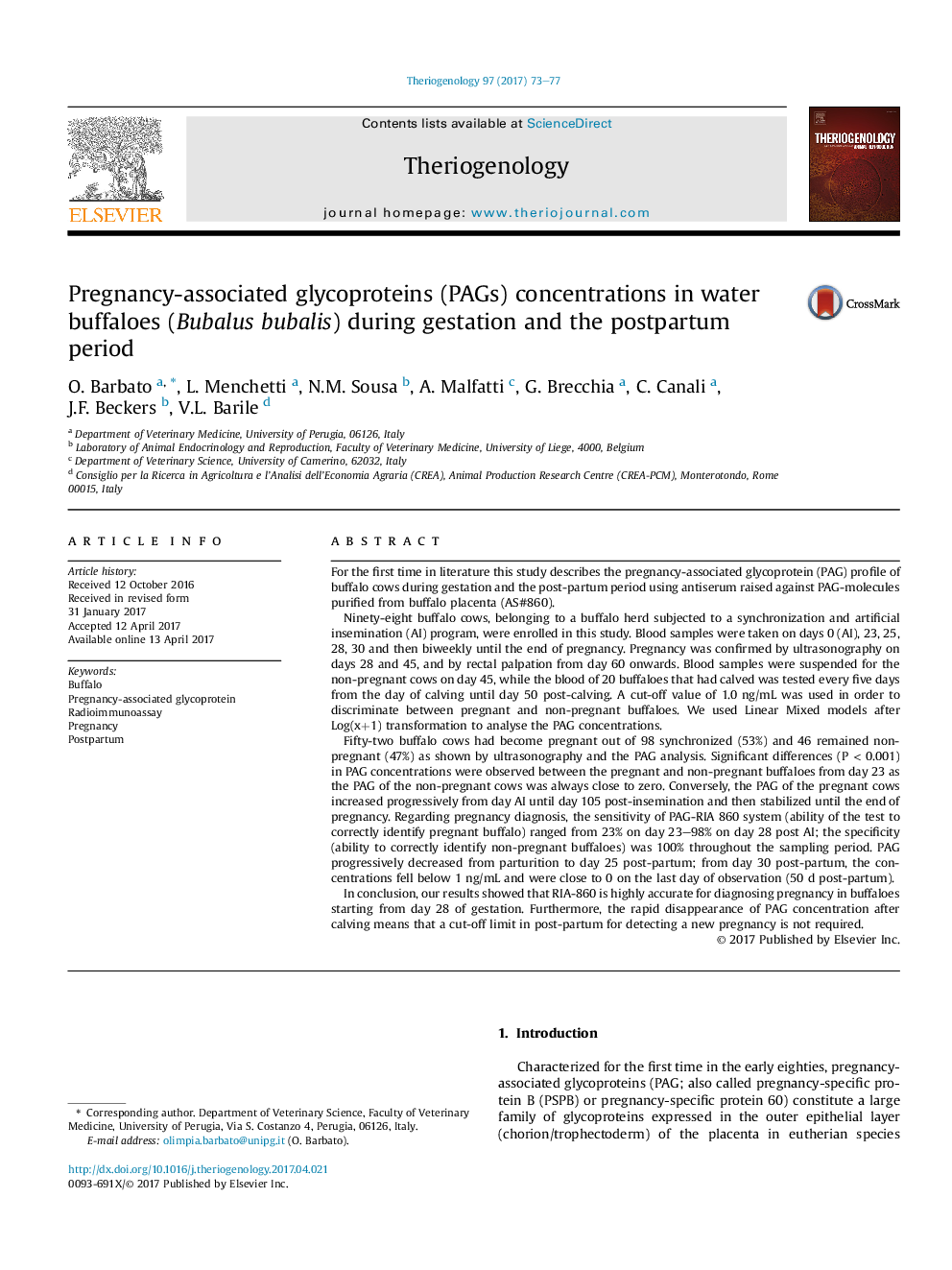| کد مقاله | کد نشریه | سال انتشار | مقاله انگلیسی | نسخه تمام متن |
|---|---|---|---|---|
| 5523165 | 1546072 | 2017 | 5 صفحه PDF | دانلود رایگان |

- This study describes water buffalo PAG profile during pregnancy and post-partum period using antiserum AS#860.
- The study improves the knowledges about PAGs in domestic ruminants.
- The homologous RIA system improves the accuracy for identifying pregnant buffaloes from day 23 of gestation.
- PAG in buffalo could be utilized early in the post-partum for detecting a new pregnancy.
For the first time in literature this study describes the pregnancy-associated glycoprotein (PAG) profile of buffalo cows during gestation and the post-partum period using antiserum raised against PAG-molecules purified from buffalo placenta (AS#860).Ninety-eight buffalo cows, belonging to a buffalo herd subjected to a synchronization and artificial insemination (AI) program, were enrolled in this study. Blood samples were taken on days 0 (AI), 23, 25, 28, 30 and then biweekly until the end of pregnancy. Pregnancy was confirmed by ultrasonography on days 28 and 45, and by rectal palpation from day 60 onwards. Blood samples were suspended for the non-pregnant cows on day 45, while the blood of 20 buffaloes that had calved was tested every five days from the day of calving until day 50 post-calving. A cut-off value of 1.0Â ng/mL was used in order to discriminate between pregnant and non-pregnant buffaloes. We used Linear Mixed models after Log(x+1) transformation to analyse the PAG concentrations.Fifty-two buffalo cows had become pregnant out of 98 synchronized (53%) and 46 remained non-pregnant (47%) as shown by ultrasonography and the PAG analysis. Significant differences (PÂ <Â 0.001) in PAG concentrations were observed between the pregnant and non-pregnant buffaloes from day 23 as the PAG of the non-pregnant cows was always close to zero. Conversely, the PAG of the pregnant cows increased progressively from day AI until day 105 post-insemination and then stabilized until the end of pregnancy. Regarding pregnancy diagnosis, the sensitivity of PAG-RIA 860 system (ability of the test to correctly identify pregnant buffalo) ranged from 23% on day 23-98% on day 28 post AI; the specificity (ability to correctly identify non-pregnant buffaloes) was 100% throughout the sampling period. PAG progressively decreased from parturition to day 25 post-partum; from day 30 post-partum, the concentrations fell below 1Â ng/mL and were close to 0 on the last day of observation (50Â d post-partum).In conclusion, our results showed that RIA-860 is highly accurate for diagnosing pregnancy in buffaloes starting from day 28 of gestation. Furthermore, the rapid disappearance of PAG concentration after calving means that a cut-off limit in post-partum for detecting a new pregnancy is not required.
Journal: Theriogenology - Volume 97, 15 July 2017, Pages 73-77